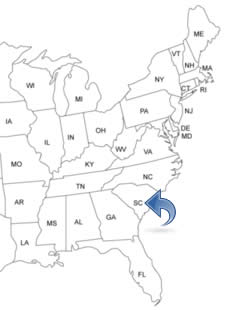SOUTH CAROLINA PEOPLE SEARCH!
- ✔ Contact Info
- ✔ Phone Numbers
- ✔ Criminal Records
- ✔ Income Info
- ✔ Neighbors
- ✔ People's Age
- ✔ Property Ownership
- ✔ And Much More
Columbia, South Carolina
Columbia is located in the central part and is the capital and the second largest city (2016) in the U.S. State of South Carolina. The Capital of Southern Hospitality. The City of Dreams. Columbia is home to the main campus of the University of South Carolina, and also to the Army's Fort Jackson. The city is ranked in the top of being one of the best places to have a small business in. Columbia has many parks which enhance the quality of life for all citizens.
To See And To Do In Columbia
- South Carolina State Museum
- Fort Jackson
- Columbia Museum Of Art
- The South Carolina Statehouse
- Riverbanks Zoo
- Edventure Children's Museum
- Hampton-Preston Mansion And Gardens
- Kayaking
- Dutch Square Mall
- Melton Memorial Observatory
- The Lexington County Museum
- McKissick Museum
- The Confederate Relic Room And Museum
History Of Columbia - Timeline
In 1750, there were settlements in the area and in 1754, a ferry was established on the Congaree River. Many early settlers of the area were English and Dutch farmers. In 1786, Columbia was founded and it was one of the first planned cities in the USA. Columbia was named in honor of Christopher Columbus.
In 1788, the State House was built. In 1790, the capital of South Carolina was moved from Charleston to Columbia. In 1793, Columbia was granted a US Post Office.
In 1801, the South Carolina College was founded, now the University of South Carolina. In 1805, Columbia was incorporated as a village. In 1823, The Robert Mills House was built. In 1825, an official town guard was created. In 1830, about 1,500 slaves worked in the village. In 1832, the first textile mill opened.
In 1838, the railroad came to the village. In 1850, nearly all activity in the village was related to cotton. In 1852, gas lamps were aglow in the streets of Columbia. In 1854, Columbia was incorporated as a city. In 1856, the First Baptist Church was built.
In 1865, the city was destroyed by a fire while being occupied by Union troops under the command of General William Tecumseh Sherman. Everything was destroyed except the university.
In 1870, the Sylvan Building on Main Street was completed. In 1891, The State, a daily newspaper, was first published. In 1892, the Palmetto Richland hospital was established as Columbia Hospital.
In 1893, Mount Vernon Mills opened. It was the city's first totally electric textile plant. In 1899, the Olympia Mill opened. It had about 100,000 spindles and 2,250 looms and was the largest cotton mill under one roof in the world.
In 1900, there were more than 21,100 people living in the city and about 9,000 people had something to do with or worked in the city's cotton mills. In 1903, the first paid firemen were hired. In 1908, seventeen blocks of Main Street were surfaced. Before that, Columbia had no paved streets.
In 1917, Camp Jackson was established as a training camp for World War 1. In 1928, the Gervais Street Bridge was completed. In 1934, the federal courthouse was purchased by the city for use as City Hall.
In 1940, Camp Jackson became Fort Jackson. 50 percent of all soldiers and 60 percent of the women entering the Army each year are trained at Fort Jackson. In 1986, the American rock band, Hootie & the Blowfish, was formed in 1986 at the University of South Carolina. In 2002, the Colonial Life Arena opened.

